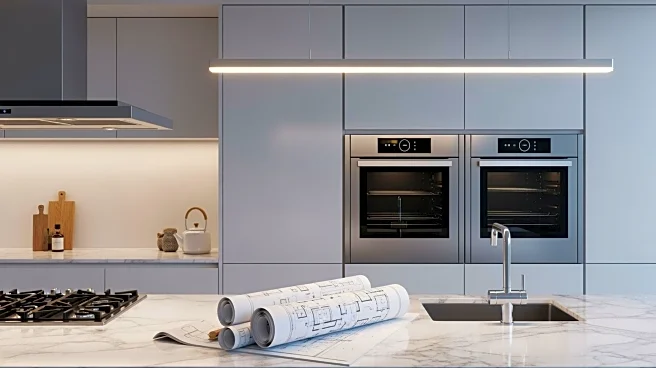What's Happening?
The Trump administration has introduced new tariffs on imported timber, lumber, kitchen cabinets, and furniture, which are expected to further challenge the U.S. housing market by increasing construction
and renovation costs. These tariffs add to existing levies on steel and copper, which have already raised the prices of building materials. The National Association of Home Builders has expressed concern that these tariffs will create additional obstacles for the housing market, which is already struggling with high mortgage rates. Companies like RH and IKEA have indicated that the tariffs will lead to increased costs, potentially resulting in higher prices for consumers.
Why It's Important?
The introduction of these tariffs is significant as it could exacerbate the existing challenges in the U.S. housing market, particularly affecting affordability and the development of new housing projects. The increased costs of materials may deter developers from pursuing low-margin affordable housing projects, impacting the availability of affordable housing. Additionally, the tariffs could lead to higher consumer prices, affecting the purchasing power of American families. The broader economic implications include potential slowdowns in the construction industry and increased financial strain on businesses reliant on imported materials.
What's Next?
The tariffs are expected to ramp up again in January, which could further impact the housing market. Stakeholders such as home builders, developers, and consumers will need to navigate the increased costs and uncertainty. The industry may see a shift in focus towards domestic production to mitigate the impact of tariffs, although this transition could take time and investment. Policymakers and industry leaders may need to explore strategies to support the housing market and address affordability concerns.














